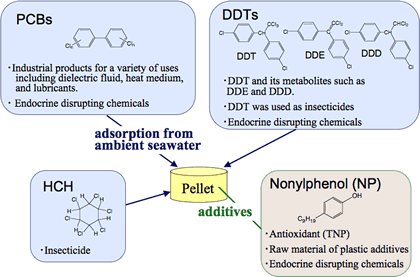
Those of you who've read the blog regularly over the past few months will undoubtedly have noticed that I have a thing about with plastic pollution in our oceans. It fouls the beaches, clutters the ocean, and kills a wide variety of sea life. But since it's already, well... everywhere, why not do something useful with it, Right? Such was the thinking of Dr. Hideshige Takada, who started International Pellet Watch.
Pellets (not the ones you feed rabbits, or alternately those which rabbits produce after you feed them) are tiny plastic granules which basically act as raw material for the manufacturing industry. They are also a common sight for beachcombers, as their size and buoyancy allow them to become widely distributed across the worlds oceans.
Plastic resin pellets (credit: Plastic Reef)
As I've mentioned before, marine plastic debris acts like a sponge for chemical pollutants (pesticides, fire retardants, lubricants, etc.) in the ocean. This is true of pellets as well, which is bad news when they are eaten by birds or fish (as the frequently are) and the pollutants are absorbed by the unfortunate predator.
This is good news for researchers like Dr. Takada though, as it provides them with millions of tiny sampling containers with which to measure the level of various pollutants around the globe. However, it would be very expensive to fly around the world to collect these tiny pellets. This is where beachcombers come in. So far Dr Takada has received and analyzed dozens of samples from 32 countries around the world, from which he has produced some interesting global pollution maps.
So if you've run across some small plastic pellets on your pelagic travels and feel the urge to mail them to Japan, please have a look at the requirements for sampling. Happy beachcombing!



No comments:
Post a Comment